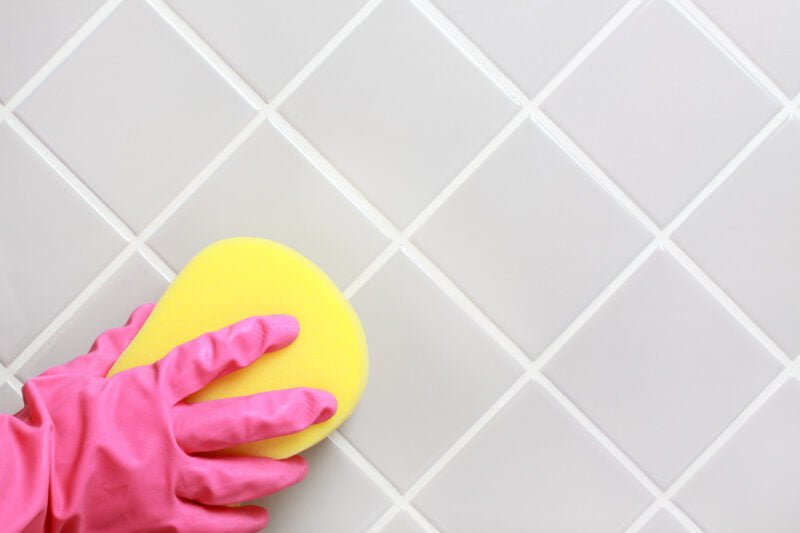From kitchen backsplashes to bathroom tile, grout is a key part of a proper tile installation.
Over time, your grout can get dirty or crack, especially if it isn’t treated the right way.
Read on to learn a few important reasons why you should seal grout so that your tile job lasts long into the future.
Grout Basics
Just about every type of tile is installed with space in between, which means that grout is required to fill in the gaps. Most grout is cement-based, which means that it’s extremely porous or able to absorb liquids.
Because of its porous properties, grout can easily become stained or cracked over time. It may also attract mold or mildew without the proper grout sealer being applied once it’s installed and completely dry.
There are several types of grout used in tile installations, and each one has its own specific application. Other than epoxy grout, you should always consider sealing it after your tile job is complete.
Epoxy grout is typically used with glass tile and repels moisture and discoloration with the use of sealant. Virtually every other type of tile uses grout that can definitely benefit from a coat of sealer.
Reasons to Seal Grout
There are many pros of grout sealing, all of which will help to prolong the lifespan of the grout itself as well as your tile. Here are some of the advantage of sealing grout:
- When you seal your grout, it protects it from spills and permanent stains since most types of grout are extremely porous.
- Grout sealer protects the grout from moisture buildup, mold, and mildew which is particularly important in bathrooms and kitchens.
- Sealing the grout will actually strengthen it and help to prevent cracks and signs of excess wear and tear.
- Using a high-quality grout sealer will provide a protective barrier that repels moisture and mold, helping to prevent tiles from cracking or breaking apart.
- When you seal the grout, you’re extending the lifespan of your floors, shower walls, backsplash, and more.
Once your tiles are installed and the grouting is complete, allow everything to dry completely for approximately 48 to 72 hours before applying a sealer.
Types of Grout Sealer
There are two major types of grout sealer products available for use: penetrating and membrane-forming grout sealer. Each one has its own unique qualities, so it’s important to make sure that you select the right product before you begin sealing the grout lines.
Penetrating grout sealers are water-based and penetrate deeply into the grout. Since grout is a porous material, this option is a good choice to help keep excess moisture out. This option is ideal when installing tile in damp areas of your home like a basement, bathroom, or kitchen.
Membrane-forming grout sealer adds a thin coating on top of the surface of your grout to prevent water from penetrating. This type is perfect for kitchen backsplashes since they repel water away from the grout.
Choose a membrane-forming grout sealer for unglazed tiles like travertine or other natural stones. However, this option isn’t ideal in a bathroom, since it doesn’t allow any water trapped underneath your tiles or grout to evaporate.
A good rule of thumb is to choose penetrating sealers in areas where water is prevalent. The membrane-forming option is best for wall tile or areas of the home where moisture is kept to a minimum.
How to Seal Grout
Now that you know more about the advantages of sealing grout, you can apply the sealer. If you get your tiles installed professionally, the contractor may apply a layer of sealer. However, some installation companies will only follow this step for an additional fee or charge.
Thankfully, it’s easy to seal your grout yourself. You can also reapply the sealer as time goes on if it starts to wear away.
If the tile install is brand-new, you don’t need to worry about repairing the grout. However, if your grout is missing or cracked, you’ll need to reapply some grout until the lines are even and wait for everything to dry first.
Make sure you choose the right type of sealer for your unique application and choose an applicator tool. Some sealers come in an aerosol spray form, but they’re not the best choice. A soft sponge or applicator brush are the best tools to apply a sealer to your grout lines.
Always make sure that you follow the manufacturer’s directions closely when you seal your grout. When you’re ready to begin, apply the sealer in small sections at a time, slowly working into the grout lines from left to right. This is the best way to ensure that you don’t miss anything.
Take your time while applying the sealer to ensure a consistent application. Keep a soft, dry cloth near you so you can wipe away any excess as you go. Make sure that you remove the sealer from the surface of your tiles before it has a chance to dry. Allow the sealer to dry, then apply a second coat if needed.
Protect Your Grout and Tile
Once you know why you need to seal grout, you’ll be able to protect your tile and your investment. Choose the right sealer and apply it to the grout slowly and evenly for a flawless application and apply another coat if you need to.
For more great articles about household tips, health, lifestyle, and much more, be sure to visit my website today!




